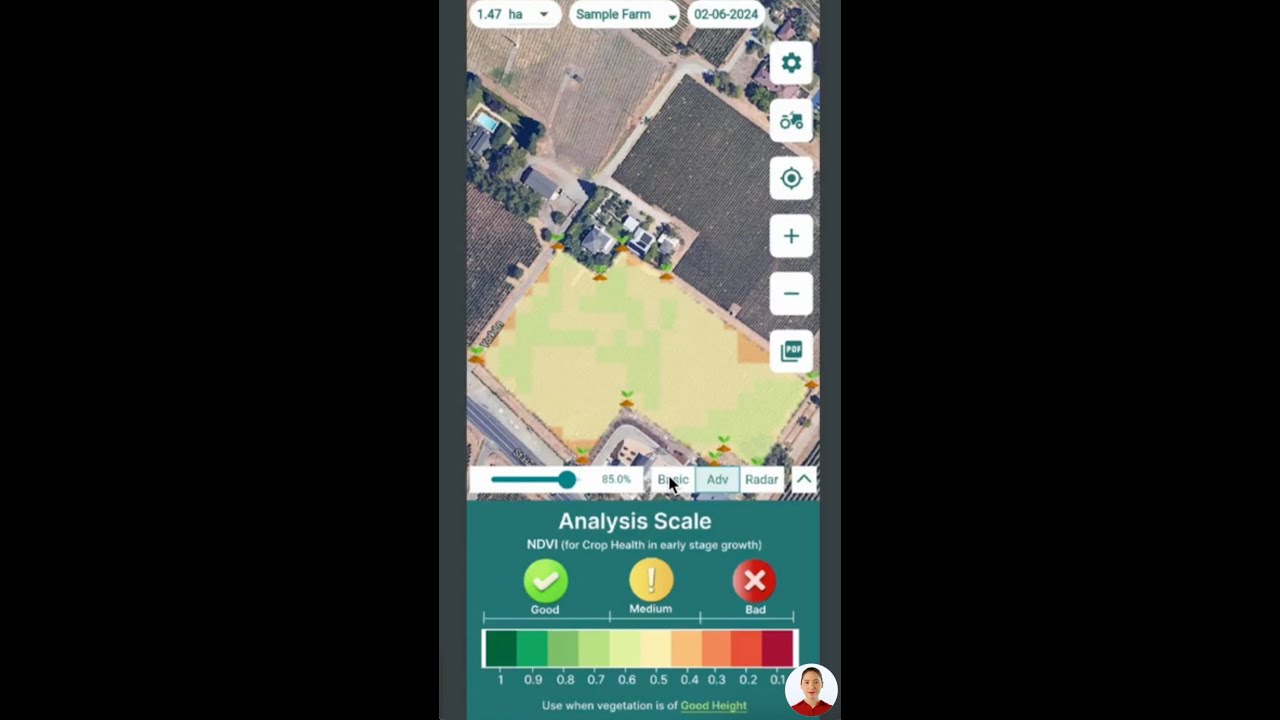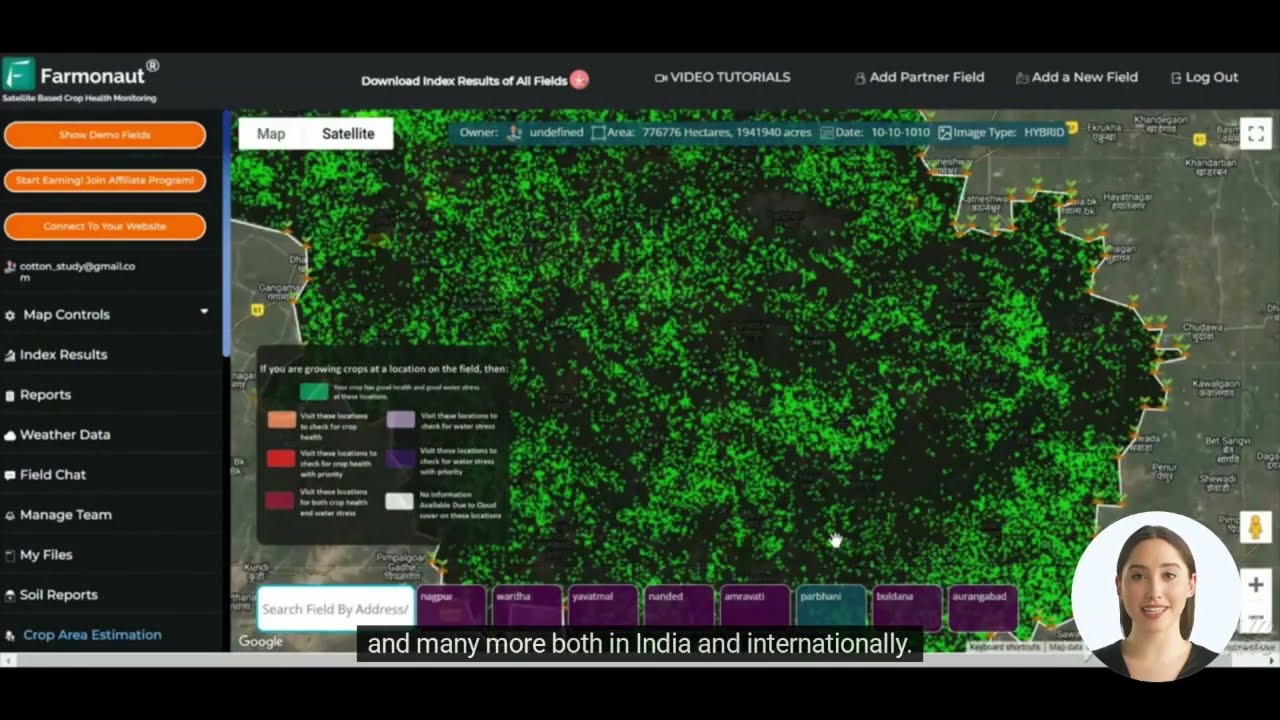Revolutionizing Australian Agriculture: Dual-Purpose Wheat Varieties Boost Export Hay Industry and Farm Sustainability
“Australian awnless wheat varieties produce hay comparable to oats while meeting premium grain standards, boosting export potential.”
In the ever-evolving landscape of Australian agriculture, we’re witnessing a revolutionary shift that’s set to transform the export hay industry and enhance farm sustainability. At the heart of this transformation lies the innovative development of dual-purpose wheat varieties, particularly awnless wheat, which is opening up new horizons for farmers across the nation. As we delve into this groundbreaking research, we’ll explore how these versatile crop options are not only meeting the demands of premium grain production but also satisfying the stringent requirements of the burgeoning export fodder market.
The Rise of Dual-Purpose Wheat in Australian Agriculture
Australia’s agricultural sector has long been a cornerstone of the nation’s economy, with its wheat production playing a pivotal role in global markets. However, the challenges posed by climate variability and market fluctuations have pushed researchers and farmers alike to seek innovative solutions. Enter dual-purpose wheat varieties – a game-changing development that’s reshaping the way we think about crop production and farm management.
These dual-purpose wheat varieties, particularly the awnless types, are proving to be a valuable asset in the farmer’s toolkit. They offer the flexibility to be harvested for either grain or hay, depending on seasonal conditions and market demands. This adaptability is crucial in a country where unpredictable weather patterns can make or break a season.

The Export Hay Industry: A Growing Opportunity
The Australian export hay industry has been experiencing significant growth in recent years, driven by increasing demand from overseas markets, particularly in Asia. This growth has created new opportunities for farmers to diversify their income streams and reduce their exposure to market risks.
Traditionally, oaten hay has been the go-to option for export fodder production. However, the introduction of high-quality awnless wheat varieties is changing the game. These new wheat types are producing hay that’s comparable in quality to established oat varieties, while also offering the potential for premium grain production if market conditions are favorable.
Awnless Wheat: The Key to Dual-Purpose Success
Awnless wheat varieties have emerged as the frontrunners in the dual-purpose wheat revolution. The absence of awns – the bristle-like appendages found on the ears of many cereal crops – makes these wheat types particularly suitable for hay production. Here’s why:
- Improved Palatability: The lack of awns makes the hay more palatable and easier for livestock to consume.
- Reduced Injury Risk: Awnless varieties minimize the risk of mouth and eye injuries in animals, a significant concern for hay exporters.
- Better Processing: Awnless wheat is easier to process into hay, reducing wear and tear on machinery.
- Higher Quality Hay: These varieties often produce softer, more nutritious hay that meets export quality standards.
The development of these awnless wheat varieties is the result of years of dedicated research and breeding programs. Australian agricultural scientists have worked tirelessly to create wheat types that can thrive in the country’s diverse climatic conditions while meeting the stringent requirements of both the grain and fodder markets.
Optimizing Crop Yields with Precision Agriculture
While the development of dual-purpose wheat varieties is a significant breakthrough, maximizing their potential requires advanced farming techniques. This is where precision agriculture comes into play, and companies like Farmonaut are at the forefront of this technological revolution.
Farmonaut’s satellite-based farm management solutions offer farmers powerful tools to optimize their crop yields and embrace sustainable farming practices. By leveraging cutting-edge technology, farmers can make data-driven decisions that enhance productivity and reduce environmental impact.
Key features of Farmonaut’s precision agriculture solutions include:
- Real-time crop health monitoring using satellite imagery
- AI-powered advisory systems for optimized farm management
- Blockchain-based traceability for enhanced supply chain transparency
- Resource management tools to improve efficiency and sustainability
By integrating these advanced technologies into their farming practices, Australian farmers can ensure they’re getting the most out of their dual-purpose wheat crops, whether they’re destined for grain production or the export hay market.
Explore Farmonaut’s innovative solutions:
The Benefits of Agricultural Diversification
The adoption of dual-purpose wheat varieties represents a significant step towards agricultural diversification in Australia. This strategy offers several key benefits:
- Risk Mitigation: By having the option to produce either grain or hay, farmers can better manage market and climate risks.
- Income Stability: Diversification provides more stable income streams, reducing reliance on a single crop or market.
- Resource Efficiency: Dual-purpose crops make more efficient use of land, water, and other inputs.
- Market Flexibility: Farmers can respond more quickly to changing market demands and price fluctuations.
- Sustainable Land Use: Crop rotation with dual-purpose varieties can improve soil health and reduce pest and disease pressure.
“Dual-purpose wheat research in Australia aims to revolutionize agricultural diversification, impacting both grain and fodder production.”
Challenges and Prospects of Dual-Purpose Barley
While the focus has largely been on wheat, researchers are also exploring the potential of dual-purpose barley varieties. Barley, known for its adaptability and drought tolerance, could offer another valuable option for farmers looking to diversify their crops.
However, developing dual-purpose barley varieties comes with its own set of challenges:
- Quality Control: Ensuring that barley varieties meet both malting and fodder quality standards can be complex.
- Market Acceptance: Establishing new barley varieties in the export hay market may require extensive marketing efforts.
- Agronomic Management: Optimizing management practices for dual-purpose barley production needs further research.
Despite these challenges, the prospects for dual-purpose barley are promising. As research progresses, we may see barley playing an increasingly important role in Australia’s agricultural diversification strategy.
The Role of Innovative Agricultural Research
The development of dual-purpose wheat and barley varieties is just one example of the innovative agricultural research taking place in Australia. This research is crucial for fostering growth in rural communities and enhancing the global competitiveness of Australian fodder exports.
Key areas of focus in agricultural research include:
- Drought Resistance: Developing crop varieties that can thrive in water-limited environments.
- Disease Resistance: Breeding varieties with improved resistance to common crop diseases like septoria blotch and red leather leaf.
- Nutritional Enhancement: Improving the nutritional profile of crops for both human and animal consumption.
- Sustainability: Researching farming practices that reduce environmental impact and promote long-term soil health.
This research is not limited to traditional cereal crops. Scientists are also exploring the potential of other plants such as rice, ginger, and tea tree oil for diversification and value-adding opportunities in Australian agriculture.
Enhancing Global Competitiveness
The adoption of dual-purpose wheat varieties and advanced farming techniques is set to enhance Australia’s competitiveness in the global fodder export market. By producing high-quality hay that meets international standards, Australian farmers can tap into emerging markets and strengthen their position in existing ones.
Factors contributing to this enhanced competitiveness include:
- Product Diversification: Offering both wheat and oaten hay provides more options for international buyers.
- Quality Assurance: Rigorous quality control measures ensure that Australian fodder meets or exceeds international standards.
- Sustainable Production: Environmentally conscious farming practices appeal to increasingly eco-aware global markets.
- Traceability: Advanced tracking systems, like those offered by Farmonaut, provide transparency throughout the supply chain.

Fostering Rural Community Growth
The expansion of the export hay industry and the adoption of dual-purpose crop varieties have significant implications for rural communities across Australia. These developments are creating new opportunities for employment, investment, and economic growth in regional areas.
Benefits to rural communities include:
- Job Creation: Increased demand for skilled agricultural workers and support services.
- Economic Diversification: Reduced reliance on traditional grain markets, leading to more stable local economies.
- Infrastructure Development: Investment in storage, processing, and transportation facilities to support the growing industry.
- Knowledge Transfer: Opportunities for farmers to learn new skills and adopt innovative practices.
By fostering a thriving agricultural sector, these innovations are helping to build more resilient and prosperous rural communities across Australia.
The Future of Australian Agriculture
As we look to the future, it’s clear that the integration of dual-purpose crop varieties, precision agriculture techniques, and innovative research will play a crucial role in shaping Australian agriculture. These advancements are not just about increasing productivity; they’re about creating a more resilient, sustainable, and globally competitive agricultural sector.
Key trends to watch include:
- Continued Varietal Development: Ongoing research to create even more adaptable and productive crop varieties.
- Increased Technology Adoption: Greater integration of AI, satellite monitoring, and data analytics in farming practices.
- Sustainability Focus: Growing emphasis on environmentally friendly farming methods and carbon footprint reduction.
- Market Expansion: Exploration of new export markets for Australian fodder and grain products.
- Workforce Development: Investment in training and education to build a skilled agricultural workforce.
For farmers looking to stay ahead of these trends, leveraging advanced technologies like those offered by Farmonaut can provide a significant advantage. By harnessing the power of satellite data and AI-driven insights, farmers can make more informed decisions, optimize their resources, and maximize their yields.
Discover how Farmonaut can transform your farming practices:
Comparison of Dual-Purpose Wheat Varieties
| Wheat Variety Name | Hay Quality Rating (1-5) | Grain Quality Rating (1-5) | Estimated Hay Yield (tonnes/hectare) | Estimated Grain Yield (tonnes/hectare) | Drought Tolerance | Disease Resistance | Suitability for Export Market |
|---|---|---|---|---|---|---|---|
| AustralPlus | 4.5 | 4.0 | 10.5 | 3.2 | High | Medium | High |
| GoldenHay | 4.8 | 3.8 | 11.2 | 2.9 | Medium | High | High |
| DualMax | 4.2 | 4.2 | 9.8 | 3.5 | High | Medium | Medium |
| FlexiWheat | 4.0 | 4.5 | 9.5 | 3.7 | Medium | High | Medium |
| AdaptaGrain | 3.8 | 4.8 | 9.0 | 4.0 | High | High | Low |
This table provides a comprehensive comparison of five popular dual-purpose wheat varieties, highlighting their performance across key metrics. Farmers can use this information to select the variety that best suits their specific needs and local conditions.
Embracing the Dual-Purpose Wheat Revolution
The development and adoption of dual-purpose wheat varieties represent a significant leap forward for Australian agriculture. By offering farmers greater flexibility, improved risk management, and access to new markets, these innovative crops are helping to secure the future of farming in Australia.
As we continue to face challenges such as climate change and market volatility, the ability to adapt and diversify will be crucial. Dual-purpose wheat varieties, combined with advanced farming technologies and sustainable practices, provide a robust foundation for meeting these challenges head-on.
For farmers looking to embrace this agricultural revolution, the path forward is clear:
- Stay informed about the latest research and developments in dual-purpose crop varieties.
- Explore the potential of precision agriculture technologies to optimize crop management.
- Consider diversifying into the export hay market to expand income opportunities.
- Invest in sustainable farming practices to ensure long-term productivity and market access.
- Engage with agricultural extension services and industry bodies for support and guidance.
By taking these steps, Australian farmers can position themselves at the forefront of a more resilient, sustainable, and profitable agricultural future.
Conclusion
The revolution in Australian agriculture, driven by dual-purpose wheat varieties and supported by advanced technologies, is reshaping the landscape of farming in this country. From boosting the export hay industry to enhancing farm sustainability, these innovations are creating new opportunities and strengthening the resilience of rural communities.
As we look to the future, it’s clear that the integration of traditional farming wisdom with cutting-edge research and technology will be key to success. By embracing these changes and continuing to innovate, Australian agriculture can maintain its position as a world leader in quality, sustainability, and productivity.
For farmers ready to take the next step in optimizing their operations, Farmonaut offers a suite of powerful tools designed to enhance productivity and sustainability. Explore our solutions and see how we can help you navigate the exciting future of Australian agriculture.
Frequently Asked Questions
- What are dual-purpose wheat varieties?
Dual-purpose wheat varieties are types of wheat that can be used for both grain production and hay or fodder. They offer farmers flexibility in harvest decisions based on market conditions and seasonal factors. - Why are awnless wheat varieties important for the export hay industry?
Awnless wheat varieties are preferred for hay production because they lack the bristle-like appendages (awns) found on traditional wheat. This makes the hay more palatable for livestock and reduces the risk of injury, meeting the high standards required for export markets. - How does precision agriculture help in optimizing dual-purpose wheat production?
Precision agriculture technologies, such as those offered by Farmonaut, provide real-time crop monitoring, AI-driven insights, and resource management tools. These help farmers make data-driven decisions to optimize yields, whether for grain or hay production. - What are the main benefits of agricultural diversification with dual-purpose crops?
Agricultural diversification with dual-purpose crops offers several benefits, including risk mitigation, income stability, resource efficiency, market flexibility, and more sustainable land use practices. - How is the Australian export hay industry growing, and what opportunities does it present?
The Australian export hay industry is experiencing significant growth, driven by increasing demand from overseas markets, particularly in Asia. This growth presents opportunities for farmers to diversify their income streams and tap into new markets.
For more information on how Farmonaut can help you optimize your farming practices and embrace the dual-purpose wheat revolution, visit our website or contact our team of experts today.




















